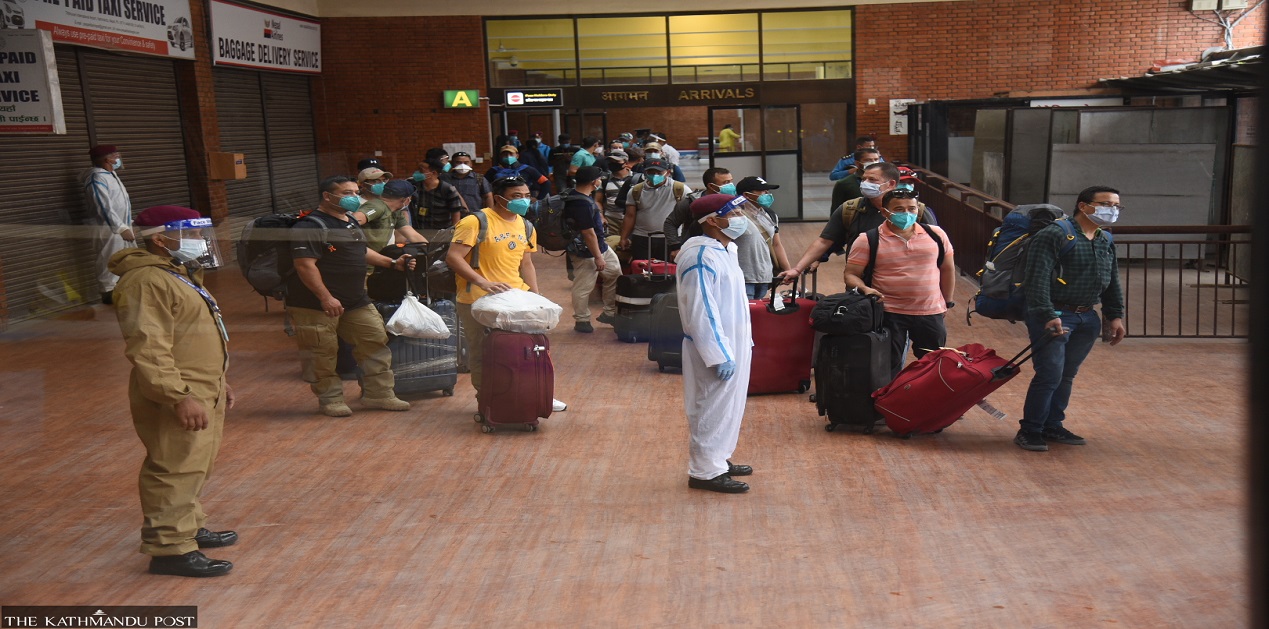When the Taliban captured the Afghan capital Kabul on August 15, Nepal was completely unprepared to face the unexpected situation that unfolded in the South Asian Association of Regional Cooperation (SAARC) member.
With the Taliban rapidly advancing their hold in the months before August, foreign policy experts had suggested that Nepal must be watchful of the geopolitical fallout of the US-Afghan pullout but the Nepal government was paying very little or no attention. Initially, there were concerns about the safety and security of Nepali working there. Like other countries, Nepal had assumed that it could take a couple of months for the Taliban to arrive in Kabul which proved wrong.
Soon after the Taliban captured Afghanistan Kabul, Nepal rushed to evacuate its nationals who were mainly working in the green zone. But, it proved an uphill task for Nepal because it does not have any diplomatic presence in Afghanistan; and the government had not ascertained the number of Nepali migrant workers there. Nepal took the support of India, the USA, Canada, and other countries to evacuate its citizens.
Though Nepal and Afghanistan had established diplomatic relations in 1961 both countries do not have embassies in each other’s country. Nepali Embassy in New Delhi is mandated to look after Afghanistan affairs. Even after the Taliban came to power, there has hardly been any communication between the two countries. Even in the past two decades after the American invasion, there was little engagement between the two countries. The leadership of two countries often met at regional platforms like SAARC. Over the past two decades, hundreds of Nepalis went to Afghanistan as migrant workers.
Now, with the Taliban in power, experts are of the view that the Nepal government should chalk out an Afghan strategy. Over the past few weeks, it seems that Nepal’s Afghanistan policy is also gradually acquiring some shape. Similarly, there are voices that as a Chair of the SAARC, Nepal should conduct consultations with other member countries about the implications of Taliban takeover for regional peace, security, and stability.
On August 24, five former Nepalese ambassadors who served in India, China, the United States of America, the United Kingdom, and Russia issued a statement, urging the Nepal government to talk with stakeholders of this region about the Afghan crisis. They were of the view that the political advancement of the Taliban in Afghanistan is indeed a subject of concern to all SAARC member countries. The five Ambassadors analyzed that evolving situation in Afghanistan can have far-reaching consequences on the region’s socioeconomic, migration and security realms. They called on the Nepal government to immediately take necessary initiatives to start a dialogue with relevant countries in the region in order to address the emerging challenges.
The five Ambassador’s statements came at a time when there were criticisms that the Nepal government is not making its position clear on Afghanistan. On August 17, two days after the Taliban seized the power, Nepal’s Ministry of Foreign Affairs issued a statement that was vague. The statement said: “The Government of Nepal has been closely following the recent developments in Afghanistan. We urge all parties concerned to ensure the safety, security, and wellbeing of the people.” The statement further stated that ‘Nepal wishes to see lasting peace and stability in Afghanistan, a fellow member of SAARC, and the continued progress and prosperity of the friendly people of Afghanistan.’
Gradually, the Nepal government started deliberations on how to deal with the new situation after the Taliban takeover. As reported by Onlinekhabar, National Security Council held interactions with stakeholders to chalk out the Afghan strategy. The deliberations on the government level were concentered on three issues. First was the evacuation of Nepali workers which has already been completed.
Second, Nepal must be prepared to tackle possible security threats that could emanate with the emergence of the Taliban because many radical groups of this region are likely to get a morale-booster. Similarly, if there are further conflicts under the Taliban regime, Afghan refugees might enter Nepal. Finally, Nepal should diplomatically be prepared on how to deal with the Taliban government. For now, according to officials, Nepal like other big countries should adopt the policy of wait and watch. Nepal might not have to deal with the Taliban government in the immediate future because of the absence of any bilateral issues. However, it should seriously work to chalk out Afghan policy because it may have to take a position on the Afghanistan issue on international platforms.
In recent weeks there has been some movement on Nepal’s Afghanistan policy. Addressing the 76thsession of the of United Nations General Assembly, Nepal’s Foreign Minister Narayan Khadka outlined a tentative Afghanistan policy. Khadka said that recent developments in Afghanistan are of common concern to all of us. Minister Khadka called for unhindered humanitarian access and full resumption of public services, including health and education for all sections of Afghan society. Nepal’s Foreign Minister urged all parties involved to ensure peace, security, and stability so that the Afghan people can live in dignity and enjoy their fundamental rights and freedom.
Nepal also urged Afghanistan to engage with the international community on the basis of the principles of the UN Charter and norms of international law. All these statements and speeches clearly show that Nepal is in favour of an inclusive government in Afghanistan and there should be full adherence to human rights, democracy, and other civil and political rights. The official statements indicate that Nepal’s Afghanistan policy that is being shaped is largely a reflection of the position taken by larger democratic countries.
(The paper is the author’s individual scholastic articulation. The author certifies that the article/paper is original in content, unpublished and it has not been submitted for publication/web upload elsewhere, and that the facts and figures quoted are duly referenced, as needed, and are believed to be correct). (The paper does not necessarily represent the organisational stance... More >>
Image Source: https://kathmandupost.com/national/2021/08/17/118-nepalis-arrived-from-afghanistan-via-kuwait










Post new comment